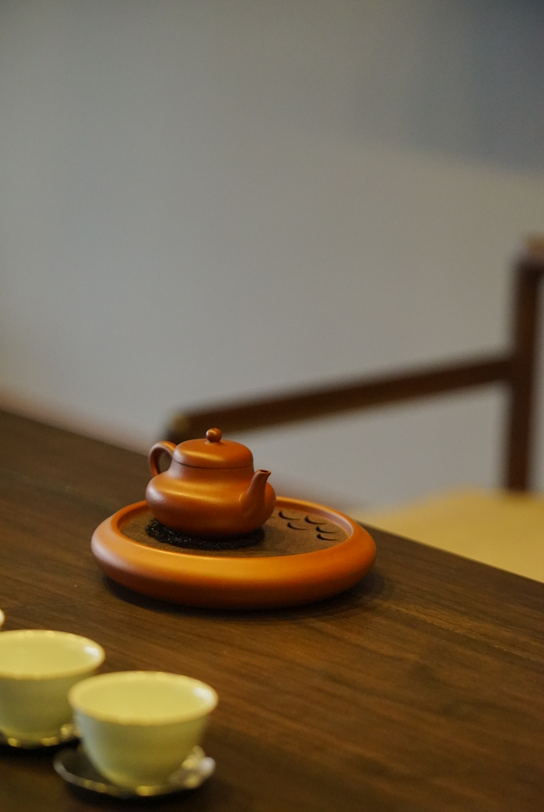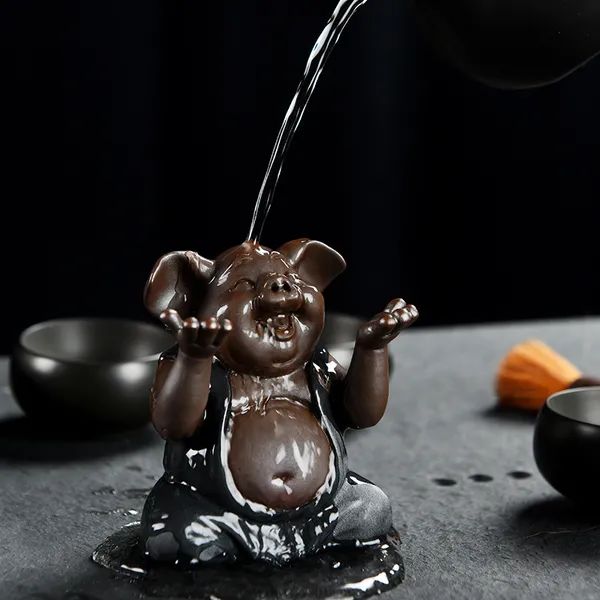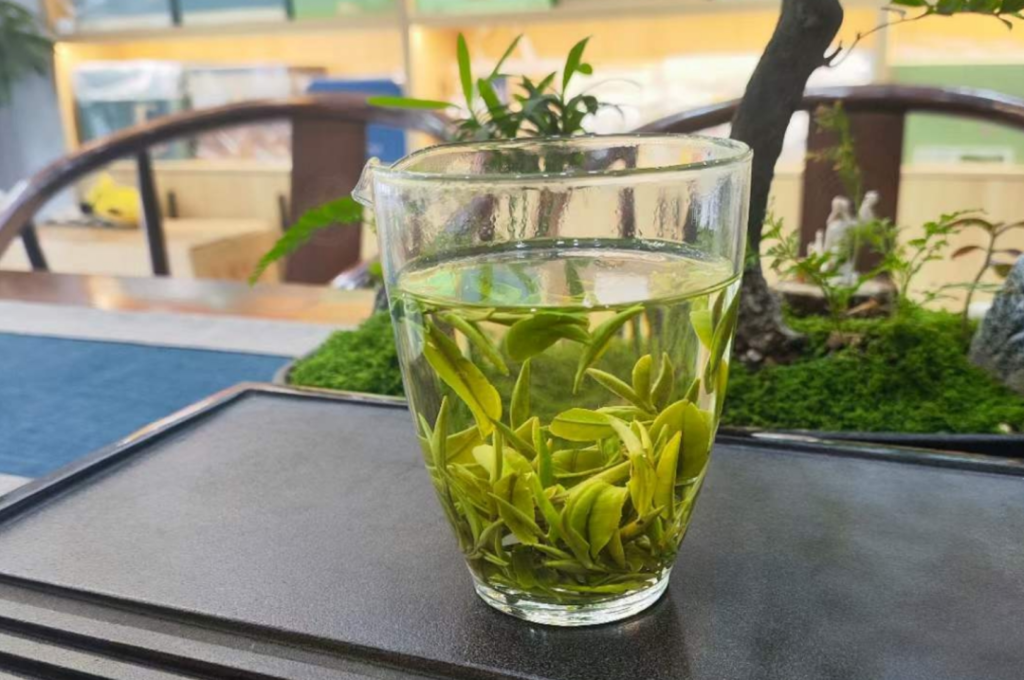The six main categories of Chinese tea are: green tea, white tea, yellow tea, oolong tea, black tea, and dark tea. What distinguishes these six types? Essentially, it is the tea-making process and the degree of oxidation of tea polyphenols that categorize them. This article will briefly introduce each type of tea, sorted by the fermentation level from low to high.
1. Green Tea
Green tea is the most produced tea in China, with production sites all over the country. Its characteristic lies in the rapid high-temperature inactivation of enzymes in fresh leaves after picking, inhibiting the oxidation of tea polyphenols (non-fermented). Green tea is known for its ‘three greens’: dry green leaves, green tea soup, and green leaf base. Rich in chlorophyll and vitamin C, green tea has a cool nature and high theine content, which can stimulate the nervous system. Representative teas include West Lake Longjing, Biluochun, and Huangshan Maofeng.
2. White Tea
White tea is a lightly fermented tea, mainly produced in the Fuding area of Fujian. The production process of white tea is the most natural, simply involving the natural spreading and gentle drying of the tender buds and leaves covered with fine hairs, allowing the tea polyphenols to oxidize naturally (slightly fermented). White tea is covered with white hairs, resembling silver and snow. Its light-colored soup and fresh, refreshing taste are characteristic. It has a cooling nature and can reduce fever and fire. Representative teas include Bai Hao Yin Zhen and Bai Mu Dan.
3. Yellow Tea
Yellow tea is also a slightly fermented tea, unique to China and less common. Based on green tea, yellow tea undergoes a yellowing process, resulting in yellow leaves and soup. It has a sweet, mellow, and refreshing taste, softer than green tea, with a sweet aftertaste. It has a mild nature, can refresh the mind, eliminate fatigue, and aid digestion. Representative teas include Junshan Yin Zhen, Huoshan Huang Ya, and Mengding Huang Ya.
4. Oolong Tea (Oolong Tea)
Oolong tea is a semi-fermented tea, mainly produced in Fujian, Guangdong, and Taiwan in China. Oolong tea has a complex and time-consuming production process, with ‘qingzhi’ being an important step, which forms its unique aroma and the green leaves with red edges. Oolong tea combines the fragrance of green tea with the richness of black tea, with aromas ranging from fresh floral to ripe fruit. It has a warm nature, contains about 3% chlorophyll, vitamin C, and theine. Representative teas include Dongding Oolong, Wuyi Rock Tea, and Anxi Tieguanyin.
5. Black Tea
Black tea is a fully fermented tea, originating from Tongmu Guan (village) in Wuyishan, Fujian. The earliest black tea is the small-leaf black tea, known as the ancestor of the world’s black teas. The difference between black tea and green tea lies in the additional fermentation process (with a fermentation degree greater than 80%). Black tea has a dark and oily dry tea appearance, with a generally high and lasting aroma, a sweet floral and fruity fragrance, and a mellow taste without astringency. The soup color and leaf base are both red. It has a mild nature, with less theine, resulting in a lower excitatory effect on the nerves. Representative teas include Keemun Black Tea, Yunnan Red, and Ning Hong.
6. Dark Tea
Dark tea is a post-fermented tea (pile fermentation is key to its quality), mainly produced in Hunan, Yunnan, Sichuan, and other places. To facilitate transportation, most are compressed into compacted teas, such as brick tea and tuo cha.
Different from other types of tea, the fermentation of dark tea does not utilize the enzymes in the tea leaves themselves, but the enzymes produced by microorganisms. Therefore, it helps with digestion and regulates the gastrointestinal tract.
Dark tea generally has a dark and moist color when dry. The liquor color is clear, yellow, and bright. The aroma is mellow, and the taste is rich and sweet with a pleasant aftertaste. It is mild in nature and can promote digestion and absorption, as well as reduce high blood pressure, high blood lipids, and high blood sugar.
Representative teas: Anhua dark tea from Hunan, Pu-erh tea, Liubao tea.
The history and knowledge of Chinese tea are profound and extensive. It is very necessary to start from the six main types of tea to form a systematic understanding of tea drinking in the future, especially for beginners who have just started to contact tea.



